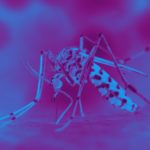Link to Pubmed [PMID] – 30575720
Nat Commun 2018 Dec;9(1):5444
Robust surveillance methods are needed for trachoma control and recrudescence monitoring, but existing methods have limitations. Here, we analyse data from nine trachoma-endemic populations and provide operational thresholds for interpretation of serological data in low-transmission and post-elimination settings. Analyses with sero-catalytic and antibody acquisition models provide insights into transmission history within each population. To accurately estimate sero-conversion rates (SCR) for trachoma in populations with high-seroprevalence in adults, the model accounts for secondary exposure to Chlamydia trachomatis due to urogenital infection. We estimate the population half-life of sero-reversion for anti-Pgp3 antibodies to be 26 (95% credible interval (CrI): 21-34) years. We show SCRs below 0.015 (95% confidence interval (CI): 0.0-0.049) per year correspond to a prevalence of trachomatous inflammation-follicular below 5%, the current threshold for elimination of active trachoma as a public health problem. As global trachoma prevalence declines, we may need cross-sectional serological survey data to inform programmatic decisions.

